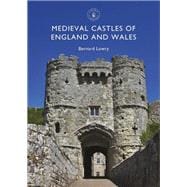Designed both to protect the inhabitants of the towns they towered over and cow them into submission, castles dominated the landscape of Medieval England and Wales. Though some were built before 1066, the Norman Conquest left a lasting legacy of domination in the form of fortifications ranging from small earthworks now barely discernible, to mighty and dominating stone fortresses.
This book examines why medieval English kings and Welsh princes constructed castles, their importance in warfare and domestic politics, and the day-to-day lives of those who lived and worked within them. It also shows how the development of new technologies affected their construction and design, and why they eventually fell into disrepair in the late Middle Ages. Beautifully illustrated with stunning photographs, this is the perfect guide for any castle enthusiast seeking to discover more about medieval castles and their inhabitants.








